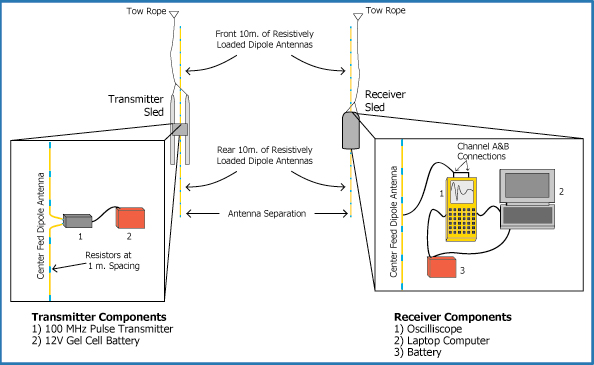There are numerous radio-echo sounding devices used by various researchers thorughout the world. The components described here are those used by researchers at the University of Wyoming, which is based on that designed by Barry Narod and Garry Clarke at the University of British Coloumbia (Narod & Clarke, J. of Glaciology, 1995). It has been designed for use on temperate glaciers.
The transmitter emits a 10 ns (nanosecond) long pulse at a frequency of 100 MHz. The details of the pulse-generation circuitry can be found in Narod & Clarke, 1995. The frequency of the pulse is modulated for use on temperate glaciers by attaching two 10 m antennas. The resulting 5 MHz frequency is ideal for temperate glacier radio-echo sounding. The transmitter is powered by a 12 V battery.
The transmitter and battery are housed in a small tackle box which is attached to a pair of old skis. The antennas extend out the front and back of the tackle box. The forward antenna is carried by the person pulling the transmitter sled's tow rope, while the rear antenna drags behind. There is no focusing of the transmitted signal, so it propagates in all directions into the ice and air. In order to reduce "ringing" of the signal along the antenna, resistors are embedded every meter along the antenna. The total resistance of each 10 m antenna is 11 ohms.
